History of the PTY-55 and A-190 "Striker Eureka"

Genesis of the TSOFAWT Project (Technical Study of Future Aerial Weapon Technology)
In the 1990s, the Erusean military launched the TSOFAWT program to explore new air combat technologies. The main objective was to test the capabilities of a stealth unmanned fighter and evaluate the advantages and disadvantages of such a platform compared to piloted aircraft.
The idea of a combat drone the size of an F-15 emerged from several key factors:
The rising costs of piloted fighters.
The need to reduce human casualties in combat.
Advancements in AI technologies and autonomous systems.
The tactical potential of a stealthy, unmanned aircraft for deep penetration missions.
In 1994, initial studies began, led by Alpha Project, the military's primary supplier. Several concepts were considered before converging on a twin-engine, stealthy structure capable of operating both autonomously and under remote control.
PTY-55: The First Experimental Prototype

The PTY-55, the first functional prototype, was introduced in 1998. This aircraft tested the technological foundations of the program:
Advanced stealth, with an optimized structure and radar-absorbing coating.
AI-assisted intelligence, enabling rapid decision-making in combat.
Four internal weapon bays, capable of carrying:
6 air-to-air missiles, or
2 missiles and 4x 100 kg bombs for precision strikes.
Tests of the PTY-55 revealed impressive performance, but also several technological limitations:
Communication and integration difficulties with piloted fighters.
Reliability issues with autonomous systems in electronic warfare environments.
High development costs, limiting the feasibility of mass production.
Despite these challenges, the military considered the program promising and approved the development of a final version.
A-190 "Striker Eureka": The Operational Version (2001)
In 2001, after several improvements, the A-190 "Striker Fathom" was unveiled. This version addressed several flaws of the PTY-55, notably by:
Improving AI, allowing better networked combat management.
Enhancing stealth, with an optimized coating and reduced electromagnetic emissions.
Increasing mechanical reliability, particularly in the engines and control systems.
Initially skeptical, the Erusean military was impressed by test results and ordered 40 units. However, production proved too complex and costly, reducing the final number to 22 aircraft.
Role Evolution: Heavy Strike UAV

After two years of service, changing operational needs and advancing technology led to the stealth aspect of the A-190 being deprioritized. The aircraft was reclassified as a stealth heavy strike UAV, specialized in:
Long-range precision strike missions.
Advanced air support, complementing piloted fighters.
Elimination of high-value targets in enemy territory.
Although it was theoretically capable of dogfighting, the government saw no strategic interest in using it for this purpose, preferring to dedicate it to bombing and air defense suppression missions.
Service and Fate of the A-190 "Striker Eureka"
2002 - 2008: The A-190s were used as heavy strike UAVs in covert operations and SEAD (Suppression of Enemy Air Defenses) missions.
2009: One drone was lost during a classified mission, shot down by a MiG-21 in close combat.
2010 - 2015: As technology evolved, the A-190 became obsolete compared to newer UAV generations in terms of cost-effectiveness.
As an experimental aircraft, its technologies were not fully mastered, leading to a flight cost of $17,708 per flight hour.
Additionally, for every 1 hour of flight, 2 hours of maintenance were required.
2016:
Of the 22 units produced:
9 were lost in operations or crashes, mainly due to instability during low-speed maneuvers.
10 remained in service.
3 were placed in museums, marking a historical milestone in aerial warfare development.
Conclusion
The A-190 "Striker Eureka" remains a major technological breakthrough in military aviation history. Although its high cost limited adoption, it laid the groundwork for future generations of stealth unmanned fighters, paving the way for new concepts in modern aerial warfare.
Flight Instructions and Controls
Landing speed: Do not descend below 340 km/h.
Low-speed sharp turns: Can easily cause stalls.
(Remember, this is NOT a fighter jet!)
Designed for high-value strategic target strikes, not for dogfighting.
(Though it can still defend itself with Fox 1 & Fox 3 air-to-air missiles.)
Bomb bay: Can carry 113 kg bombs internally.
Weapons System Operations:
Before firing, activate Group 7 (to open the bomb bay).
Lights: Controlled by Group 4.
Overall, this is a very simple aircraft to operate.
Enjoy your flight!
Specifications
Spotlights
- UnitedinOne90XCVBNKA one month ago
- HuskyCo3D one month ago
- Convex one month ago
General Characteristics
- Predecessor [CLOSED] UAV Challenge
- Created On Android
- Wingspan 43.1ft (13.1m)
- Length 65.0ft (19.8m)
- Height 15.0ft (4.6m)
- Empty Weight 21,705lbs (9,845kg)
- Loaded Weight 28,194lbs (12,789kg)
Performance
- Power/Weight Ratio 2.391
- Wing Loading 45.8lbs/ft2 (223.6kg/m2)
- Wing Area 615.5ft2 (57.2m2)
- Drag Points 7839
Parts
- Number of Parts 191
- Control Surfaces 2
- Performance Cost 1,247

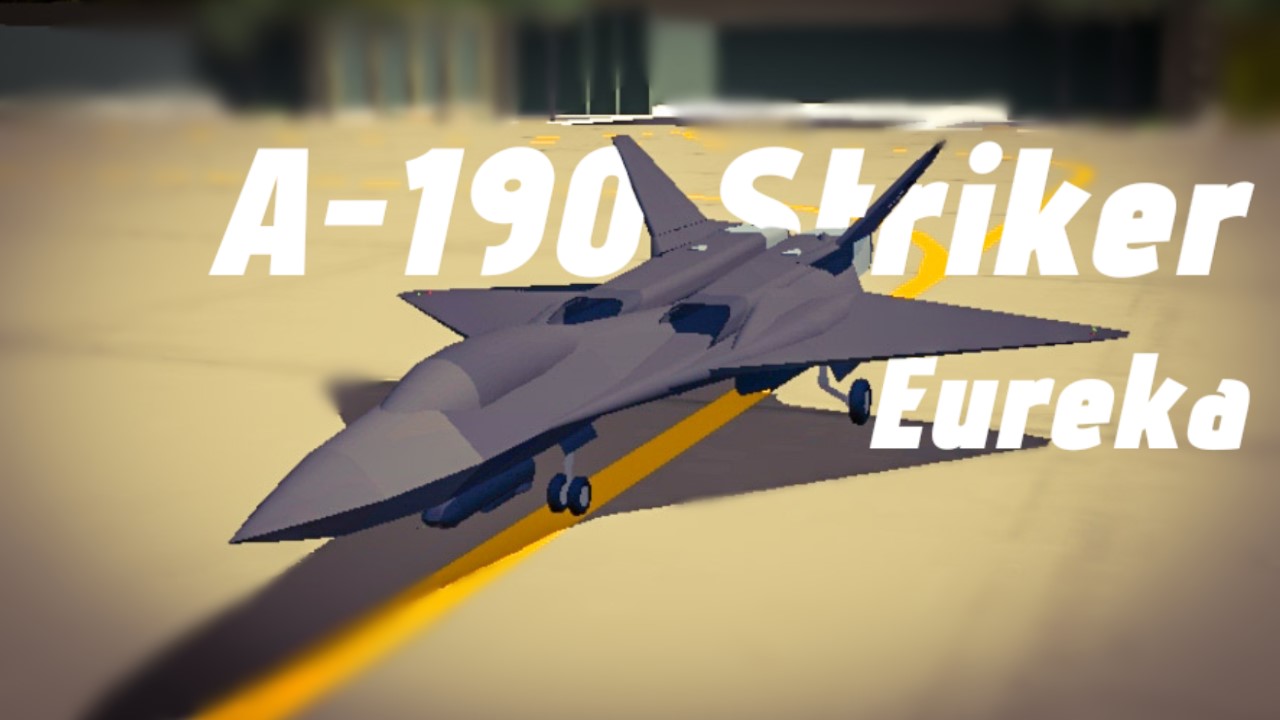
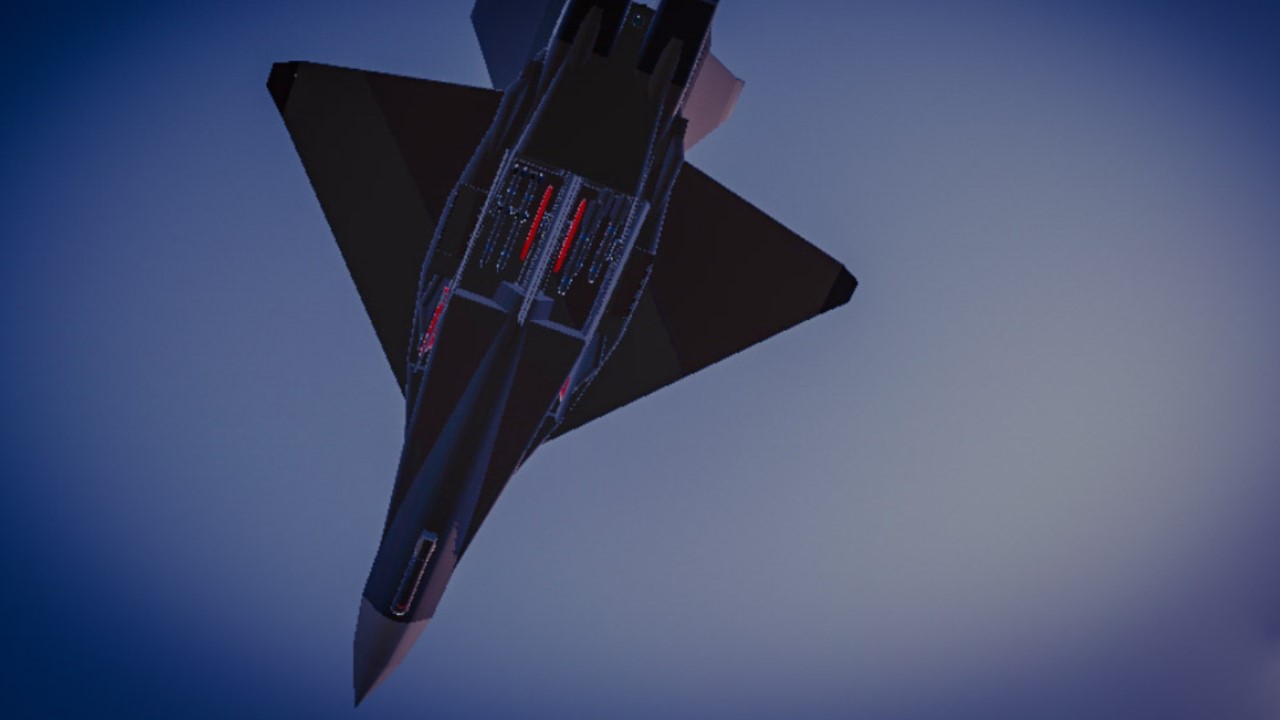
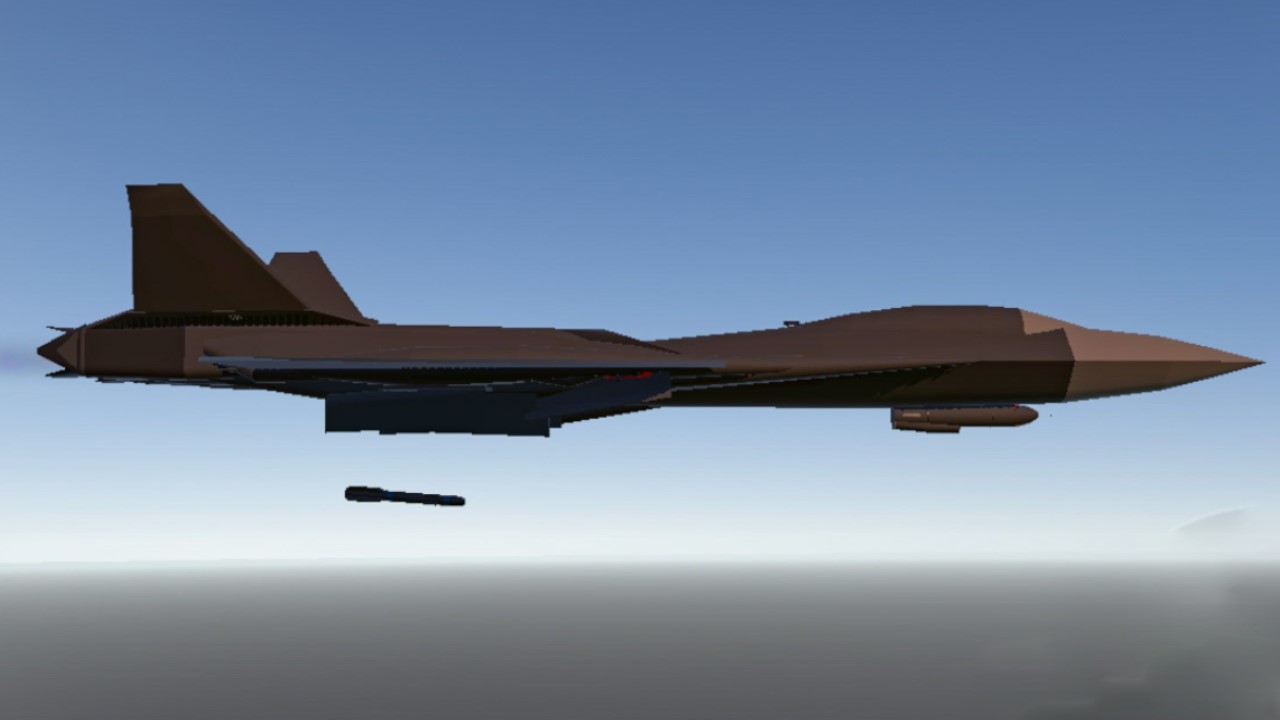

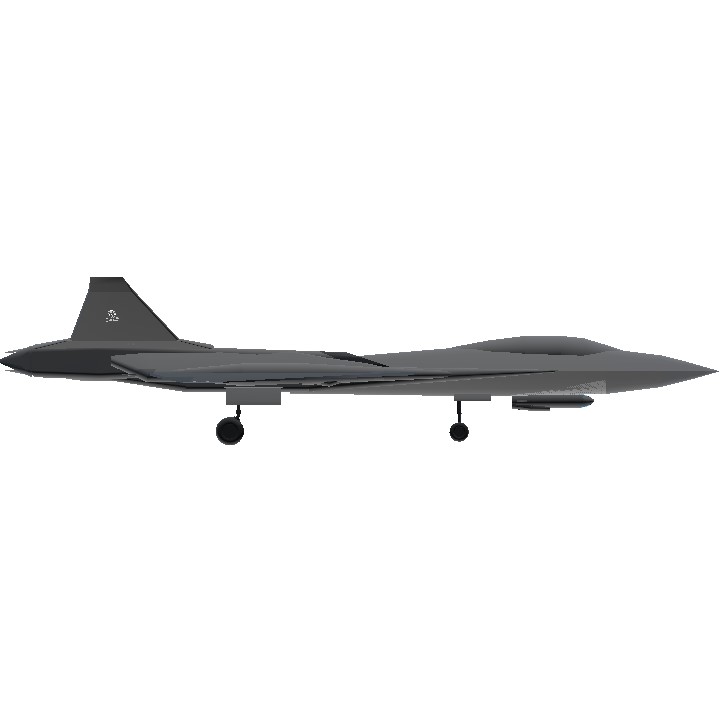
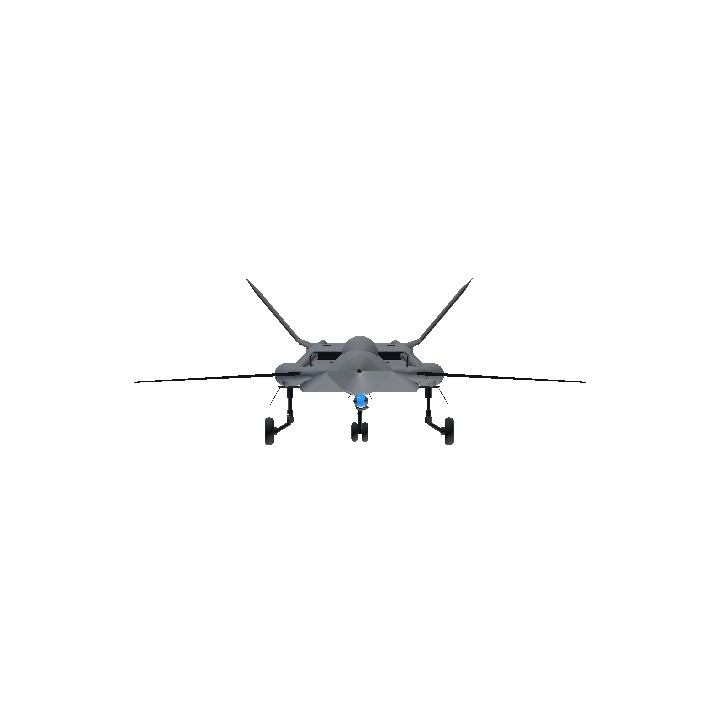
@UnitedinOne90 😄
Lol
cool, i like it